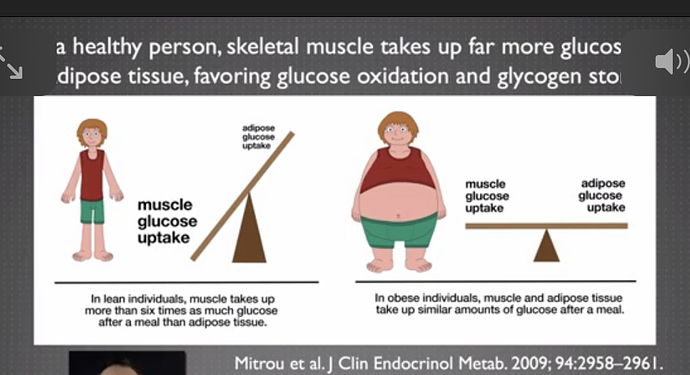Certainly. Since hyperglycemia is an emergency situation, the body has evolved defenses against it, primarily insulin. The damage done by advanced glycation end-products from elevated serum glucose and the damage caused by chronic hyperinsulinemia have been clearly eludicated. The insulinogenic effect of glucose, and the mechanisms by which insulin signals adipose tissue to store glucose as triglycerides and muscle to metabolize glucose and store the excess as glycogen are too well-known to need repeating here.
The difference between diets rich in refined carbohydrates and refined sugar and the sort of carbohydrate-rich traditional diet I suspect you have in mind, lies in the lack of fiber, on the one hand, and the lack of massive hits of glucose and fructose, on the other. The dietary fiber in the traditional diets slows down the absorption of glucose and fructose into the bloodstream, and promotes the feeding of the gut bacteria instead. Refined carbohydrate, stripped of the protective fiber, is mostly chains of glucose molecules that enter the bloodstream unimpeded.
Refined sugar, of course, gives the body a double whammy, because it contains not only glucose, but also fructose. The glucose has the well-known effect on insulin, and the fructose causes fatty liver disease, when ingested at a rate too high for the liver to handle (the liver’s safe-handling rate of fructose metabolism is fairly low). Fatty liver disease is a known cause of hepatic insulin resistance, and it is a serious risk factor for Type II diabetes.
I have no doubt that people can eat a reasonable amount of carbohydrate that does not include refined grains and sugars and much healthier than they would be otherwise. (That is, after all, essentially what we do on low-carb/keto.) Gout and diabetes were “rich-man’s” diseases for many centuries, after all. They did not reach epidemic proportions until modern industrial refining processes were developed in the nineteenth century and brought the price of white flour and refined sugar within reach of us common folk.
If all that is your point, then it is well-taken. But the way you present it always makes me think you are denying the effect of serum glucose on serum insulin and the effect of serum insulin on fat storage, both of which are pretty much settled science.





